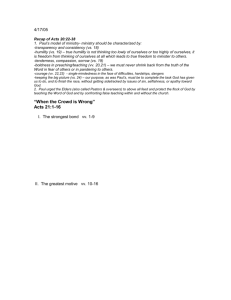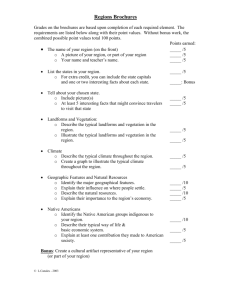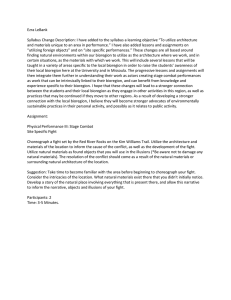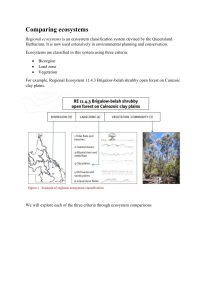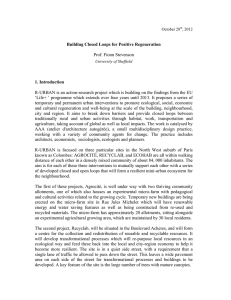Creating a Sense of Place
advertisement
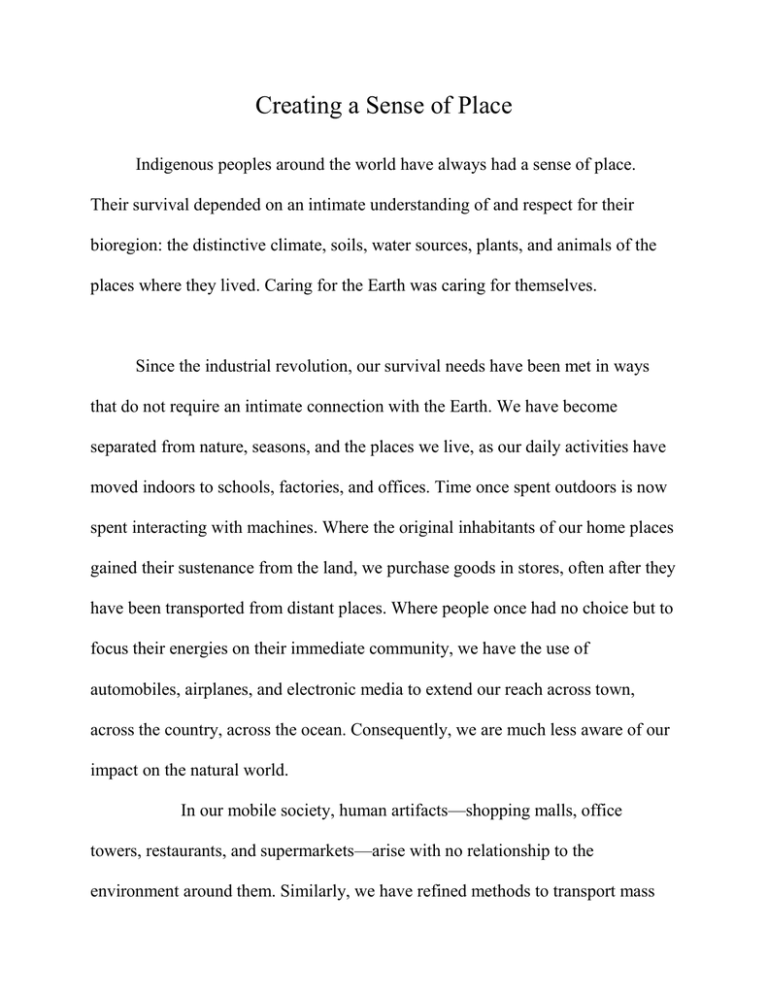
Creating a Sense of Place Indigenous peoples around the world have always had a sense of place. Their survival depended on an intimate understanding of and respect for their bioregion: the distinctive climate, soils, water sources, plants, and animals of the places where they lived. Caring for the Earth was caring for themselves. Since the industrial revolution, our survival needs have been met in ways that do not require an intimate connection with the Earth. We have become separated from nature, seasons, and the places we live, as our daily activities have moved indoors to schools, factories, and offices. Time once spent outdoors is now spent interacting with machines. Where the original inhabitants of our home places gained their sustenance from the land, we purchase goods in stores, often after they have been transported from distant places. Where people once had no choice but to focus their energies on their immediate community, we have the use of automobiles, airplanes, and electronic media to extend our reach across town, across the country, across the ocean. Consequently, we are much less aware of our impact on the natural world. In our mobile society, human artifacts—shopping malls, office towers, restaurants, and supermarkets—arise with no relationship to the environment around them. Similarly, we have refined methods to transport mass culture everywhere, rather than allow a diversity of cultures to grow from nature’s abundant variety. The result is an increasing number of cities and towns that are similar in appearance and feel. The readings in our course focus on exploration, cultural exchange, nature and origins. We need to consciously immerse ourselves in our place, by learning as much as we can about it and concentrating our energies there. The more we receive our sustenance from, and take care of our wastes in, our own bioregion, the better we can see the effects of our living patterns on the water, soil, and living beings around us. When we have a stake in our own place and are committed to making it last over time, the benefits can be immense—to ourselves, our communities, and to the Earth. As the course progress, you might want to identify your own bioregion. What watershed, landforms, vegetation, animal life, and traditional culture do you identify with? A Sense of Place To be rooted is perhaps the most important but least understood need of the human soul. --Simone Weil Of all the memberships we identify ourselves by (racial, ethnic, sexual, national, class, age, religious, occupational), the one that is most forgotten, and that has the greatest potential for healing, is place. We must learn to know, love, and join our place even more than we love our own ideas. People who can agree that they share a commitment to the landscape/cityscape—even if they are otherwise locked in struggle with each other—have a least one deep thing to share. ---Gary Snyder Background The notion of a “sense of place” finds its roots in human awareness and consciousness. In indigenous societies, the individual and place have no separate identity because they define each other. In North American culture, we view ourselves as separate from our land, and land is a commodity in a world defined by economic value. Maps of land delineate political boundaries and road systems. In western North America, we have a tradition of using land and moving on. Knowing our place is not part of our tradition. The American bioregional movement takes a radically different view of land. Bioregions are geographic areas defined by natural features like watersheds, landforms, vegetation, animal life, and indigenous cultures. Wisdom comes from truly knowing the place we live. Bioregionalists seek to create lifestyles and social institutions in harmony with their unique place, fitting culture to nature rather than the reverse. This means providing for energy, food, shelter, and transportation in a manner that promotes local self-reliance and long-term sustainability. Selection from Northwest East Institute. Discussion Course on Discovering a Sense of Place.Oregon, 2007

